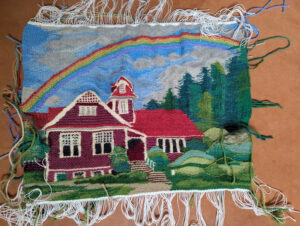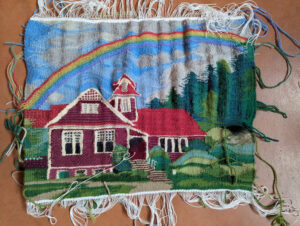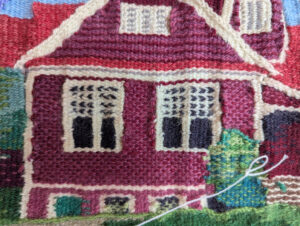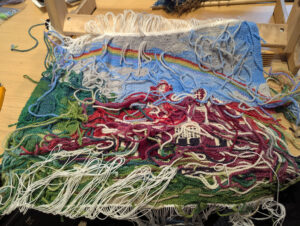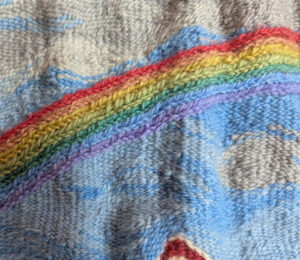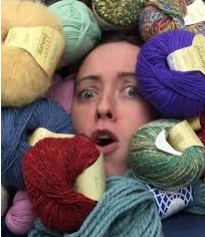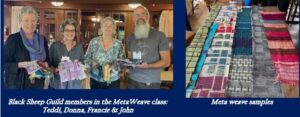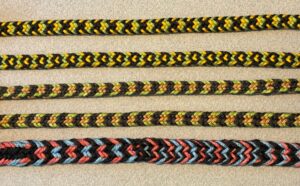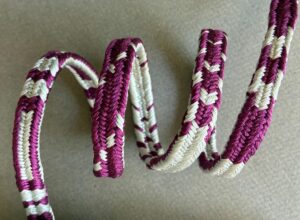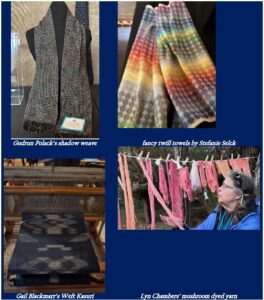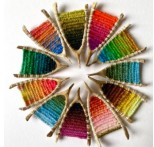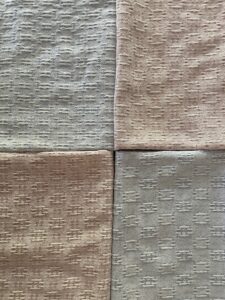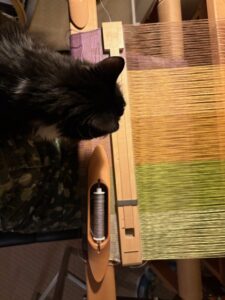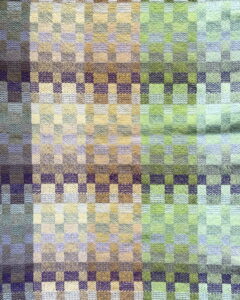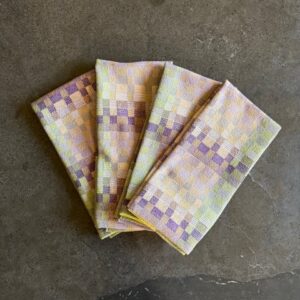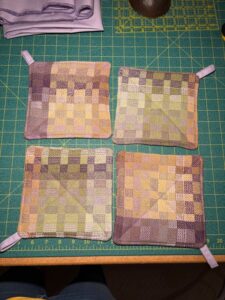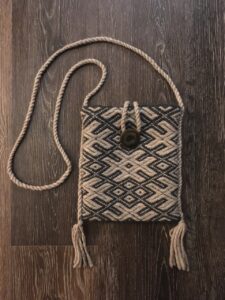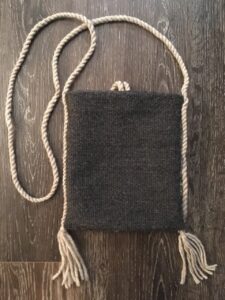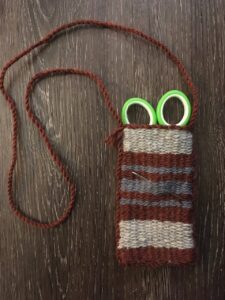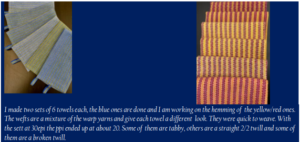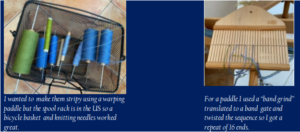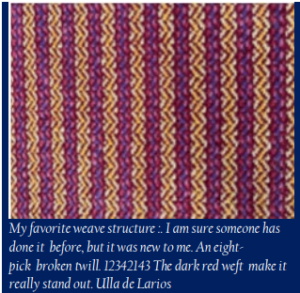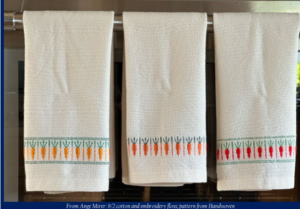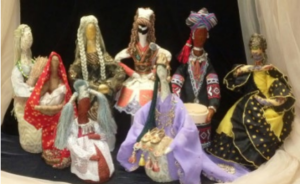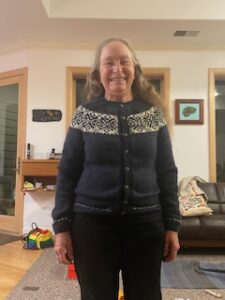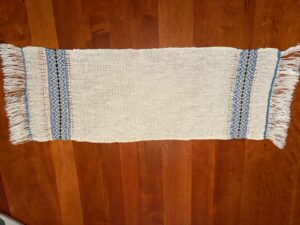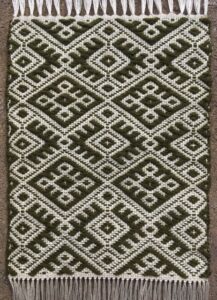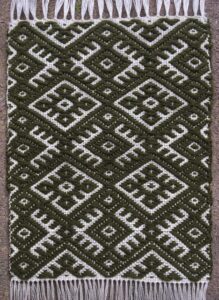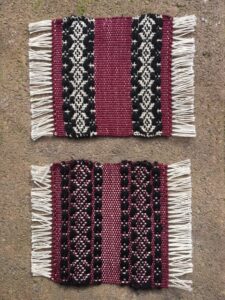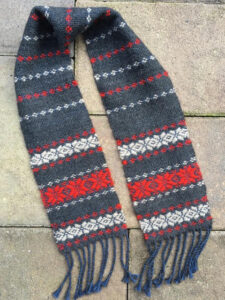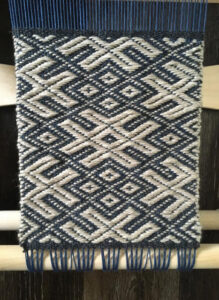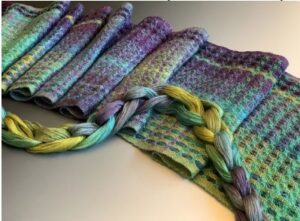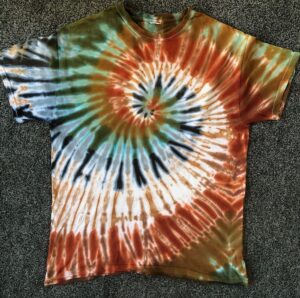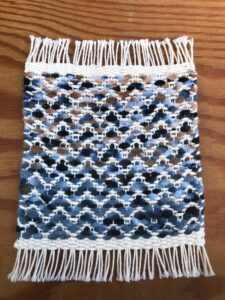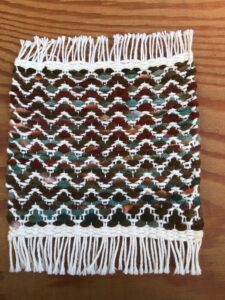Weaving a Community: The Lopez Library Tapestry Project
By Barbie Paulsen
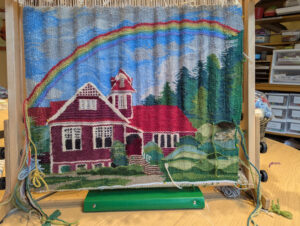
The Setting
Lopez Island, where I moved 5 years ago, is accessed through a ferry terminal in Anacortes,
about an hour and a half north of Seattle. Lopez has about 3,000 year-round residents. It’s a friendly place where people wave to oncoming cars on the road. The community feeling is strong.
At the heart of this project sits the Lopez Island Library. They understand their place as a
gathering, educational and connecting space for the island residents. They have a library
employee with the title of Community Alchemist, and she does exactly that: mix people together to make transformational things happen. Through her, I began teaching drop-in weaving sessions every Wednesday afternoon. This led to an Artist in Residence (AIR) stint through the library, which led to this tapestry.
How the Tapestry Project Started
My friend Julia and I taught two workshops for the library’s AIR program. I was the leader for our tapestry workshop where a dozen Lopezians learned the basics of weaving on block looms. We wove on scraps of 1 x 4 wood, sanded and with finishing nails lining each end. I encouraged them to try a couple of two color techniques. In the process, I picked up on new skills. I had only taken a one-day tapestry workshop through CNCH and had taught countless kids how to weave on a block loom. I was learning along with my new adult students.
To give these students more experience and to involve the general population of the island, I set out to make a community tapestry. It was a bit insane to set out on this ambitious project having never woven a tapestry larger than 4”x6” but that didn’t slow me down.
Setting Up for Tapestry Weaving
The materials to get started came easily. My “partner in twine” had a tapestry loom she wasn’t using. She hadn’t woven on it herself, so I followed the manufacturer’s YouTube tutorial on warping. I had a reference book to fall back on. The carpet warp was given to me by a weaving friend who was downsizing. We were off to a good start. I made a cartoon of sorts by placing a black and white photocopy of the library image behind the warp strings. I had modified the image in photoshop so that the library walls would be vertical and easier to weave.
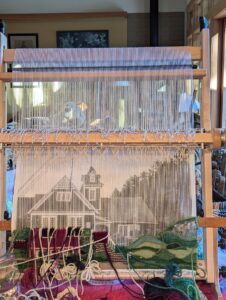
Learning to Dye Wool
I wanted far more colors than any yarn line ever carries, so I knew I’d be dying my own. I chose Collingwood Rug Yarn from WEBS. This yarn was out of stock in “Natural” for weeks, so I had to get started using Dune as my base color. This was another happy advantage that added a warmth to the image. When “natural” finally became available, I used it to dye the clear colors of the roof and sky.
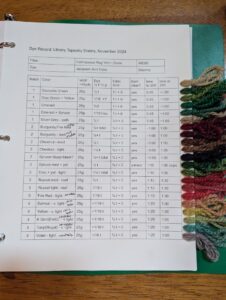
I chose Jacquard Acid Dyes from Dharma Trading Company. In addition to being well reviewed for fastness, they were reported to have the most exhausted dye baths. I didn’t want to dump synthetic dyes into my septic tanks and in November, I didn’t want to be tromping outside to dump them into my thistle patch. I selected a range of about a dozen colors. Looking back, I could have made do with less than half that many. I used all the ones I bought, some more than others.
For the dye process, I wound off 25 gram skeins for ease in calculations and because that
makes a nice size ball. These were scoured and spun out in my dye supply salad spinner. I set up my stock pot with the 5 wide mouth mason jars that it would hold. I measured the dye into each jar, added a splash of boiling water from the kettle, then diluted until the jar was about half full. Each damp, scoured skein went into its own dye jar, with a skewer labeled with its color. The skewers came in handy for poking the fiber into the dye bath.
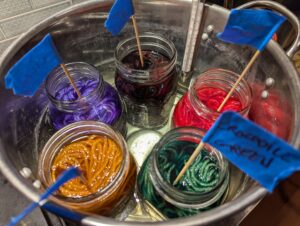
Multiple colors in one pot
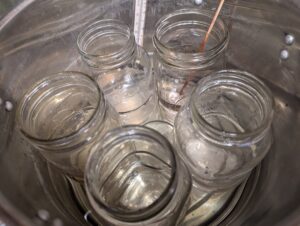
Exhausted dye baths
Dye Calculations
Most dye recipes assume a large amount of fiber. Reducing the recipe for 25 gram skeins gave me quantities I couldn’t measure with my scale. A bit of trial and discovery taught me that a bit of dye the size of a rice grain, scooped with a ⅛ t measuring spoon, would saturate the color. If I wanted to mix colors, I would use half a rice grain of each. Or I would dissolve half a rice grain worth of dye in a tablespoon of water and then drip that into a dye jar of another color until I got the overtone I needed. I used this to add golden hues to some of the greens. I learned to trust my eyes.
After simmering the dye jars in a water bath just below 200F, I added citric acid powder which drove the last of the dye out of solution and into the fiber. The dye baths in the jars were completely clear after the fiber was removed.
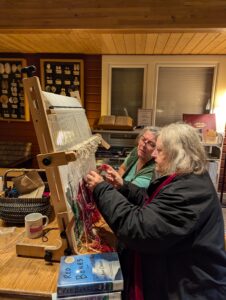
Helping a new weaver in the library
Weaving a Community
Participation in the tapestry has been heartwarming. In the end, we had 74 community members and visitors weave on the tapestry. Very few people have declined to weave when invited. Some ask for guidance and reassurance. Some grasp the basics of alternating over and under and how to watch tension at the turn around point and when making a bubble before beating down.
Some weave a single pass of a couple of inches, others sit for many minutes and weave a bush or a section of the roof. None of them are experienced tapestry weavers, but then neither am I. We are learning together. I fill in the tricky corners and set up multiple areas for weaving so that people can make a choice of what they want to work on. I’m there as a safety net, mostly to keep people from pulling the weft too tight. People tug it as if it were a lifeline. We have conversations about fear and trust and risk and letting go of perfection. We laugh and we bond.
The results have an amateurish feel, but that’s because that’s what they are. It is recognizably the library building, and also recognizable as fantasy. About ⅔ of the way to completion, the library staff who had been giving me unconditional encouragement all along began to believe in the project enough to speculate about where in the library it might hang when finished. That’s up to them. It doesn’t even matter if it hangs where it risks fading. We all fade over time. The point has been the process, the building together of a thing. It’s a reminder that big results can be achieved with small steps by many people working together. Let’s all remember that.
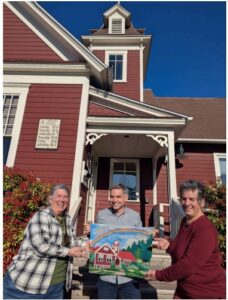
Presenting the finished tapestry to the head of the Lopez Island Library
The Finished Product
